Mealworms? Those squirmy, squishy, crawling little things? Why would you want to have anything to do with them? Because they have major health benefits for chickens and, by implication, for you. Explore now our mealworms breeding guide to learn more about these little cuties.
A veterinarian will be able to help you identify the most important meals for your chickens, and then you can feed them accordingly.
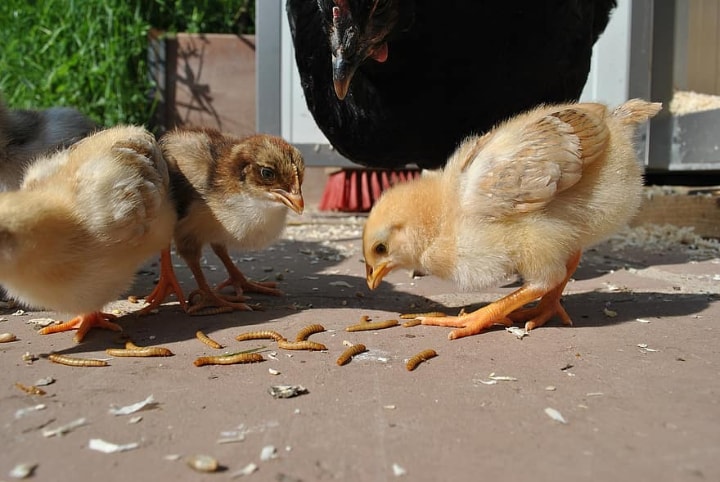
Mealworms are one of those meals that can be very nutritious for the cluck-cluckers, so it makes a lot of sense to feed them to your chickens from time to time.
What Are Mealworms?
Do you know the mealworm beetle? Mealworms are the larval form of that beneficial pest. They usually live in the dark, and they can stay together in high densities even if there’s not a lot of space.
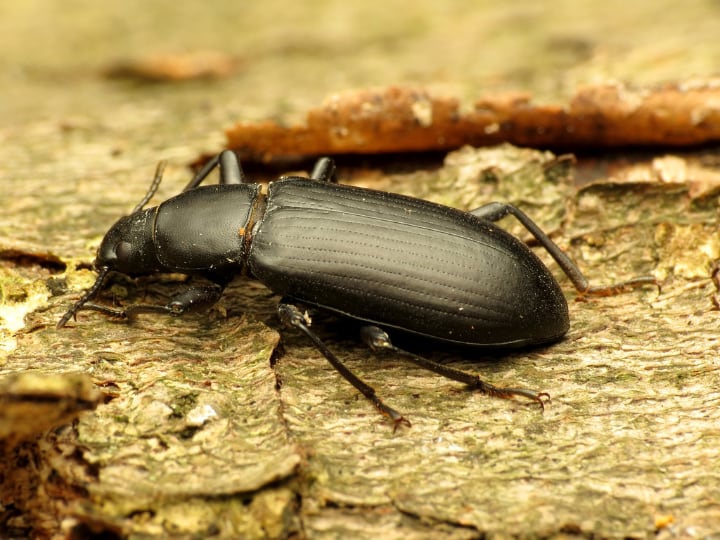
They do prefer a humidity of around 70%, and they usually have their hive where they breed and store food.
Good to know: The lifecycle for these worms is anywhere from 6 weeks and up to 6 months or even more. Once the worm reaches the pupae stage, it will start peeling off the old skin to grow and further expand into a beetle.
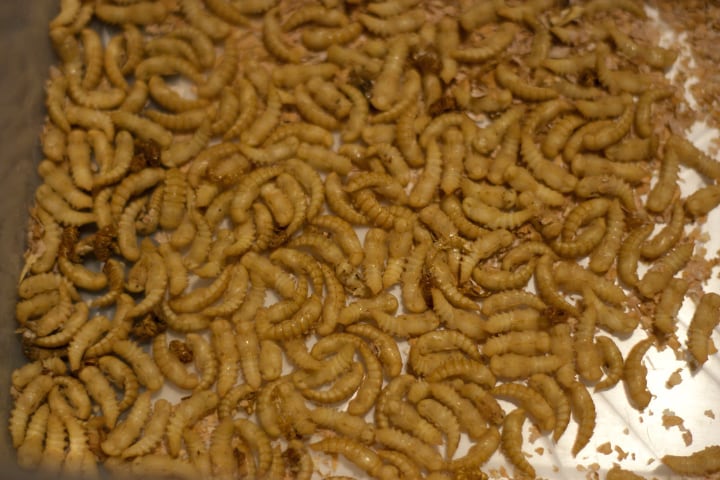
One thing to note about mealworms is that they don’t bite. This is a common myth that a lot of people tend to believe, yet it’s not true.
They are friendly, and you don’t have to worry about getting bitten when you feed or breed them, you will be more than ok.
In addition, a mealworm won’t fly. There were only a few rare occasions in which a mealworm flew a few centimeters off the ground, but that’s uncommon.
That’s why you don’t have to worry about them leaving the encasement where you’re keeping them.
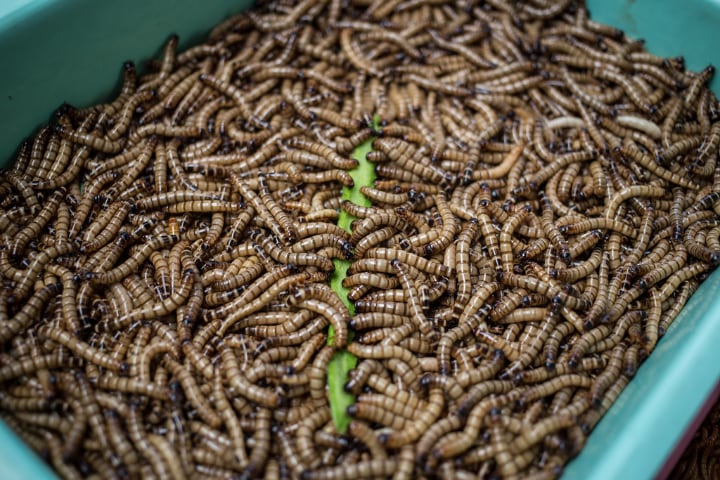
Good to know: Mealworms are very prolific breeders, and a female can have up to 500 different eggs. Eggs will usually take 19 days to hatch.
Another thing to note is that mealworms are edible for humans, and some groups find them to be delicacies.
It comes to personal preference, but they a great source of protein and can be considered a superfood. You will find them to be a common food for people in Asian countries.
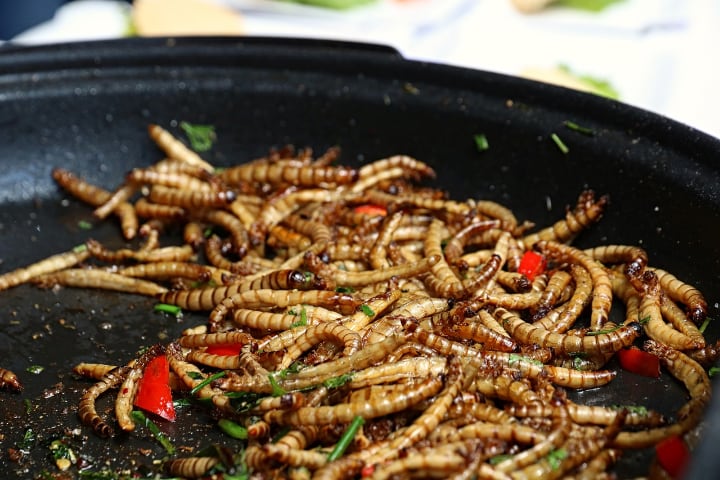
These worms can also be pests too. Their larvae will feed on stored grains and they can damage stored food.
Fact: It’s said that these worms originated from the Mediterranean region, but now you can find them just about anywhere in the world.
Mealworms for Chickens Benefits
Even if mealworms don’t seem appealing to people, chickens find them a delicacy. Chickens need to have a varied and healthy diet, so a mealworm can be a part of the chicken coop menu.
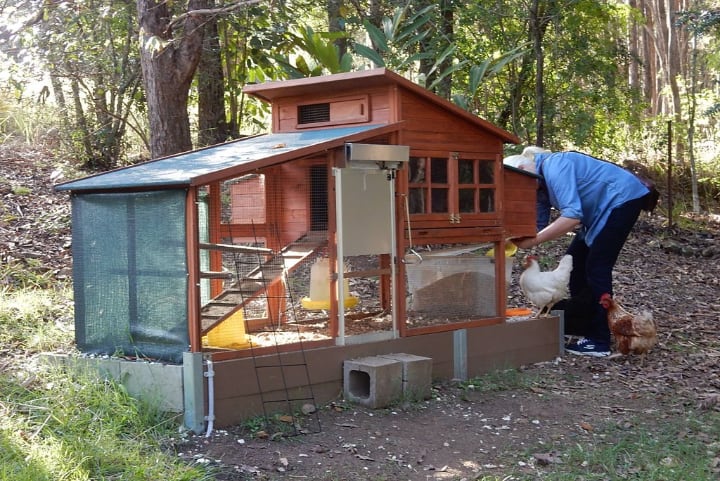
It all comes down to having them ready for your chickens and preparing them properly. Here are some benefits to focus on.
They Are Full of Protein
Your chickens need around 16% protein to stay healthy, and mealworms can provide that.
Pullets and younger chickens will need even more protein, so you can offer them even more than one protein. It’s essential to have a bag with these worms when you feed them to your chickens.
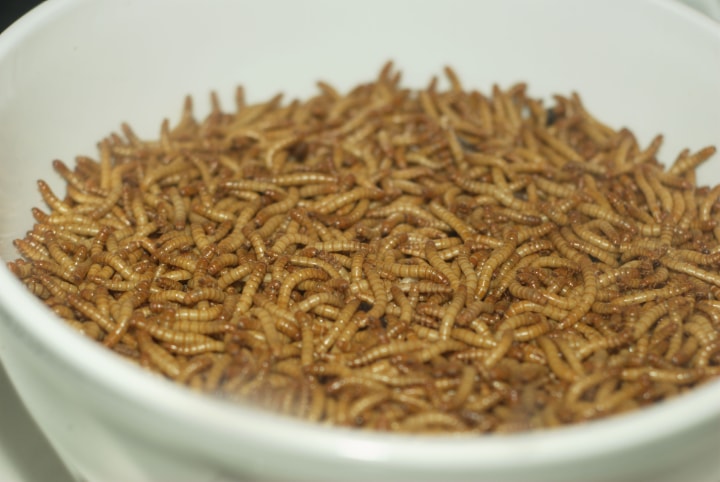
These worms are great for chickens because they help them grow strong and they will have a lot more energy. Stick to the recommended serving size, don’t overdo it.
Molting Aid
Feeding your chickens a mealworm from time to time can be great for molting. Chicken lose old features during the fall and spring.
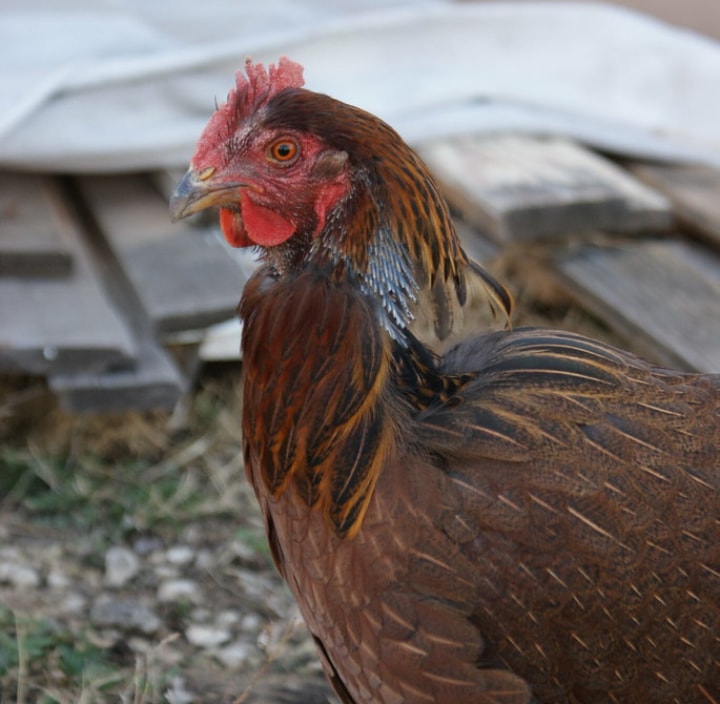
This process is normal, but it can get out of control. Thankfully, mealworms will give all the necessary protein to replace those old feathers.
More Nutritious Eggs
The diet of your chickens will automatically impact how many nutrients you can find in these eggs.
You will notice that chickens on forage and the occasional mealworm are healthier, and their eggs will have a lot more protein, minerals, and vitamins.
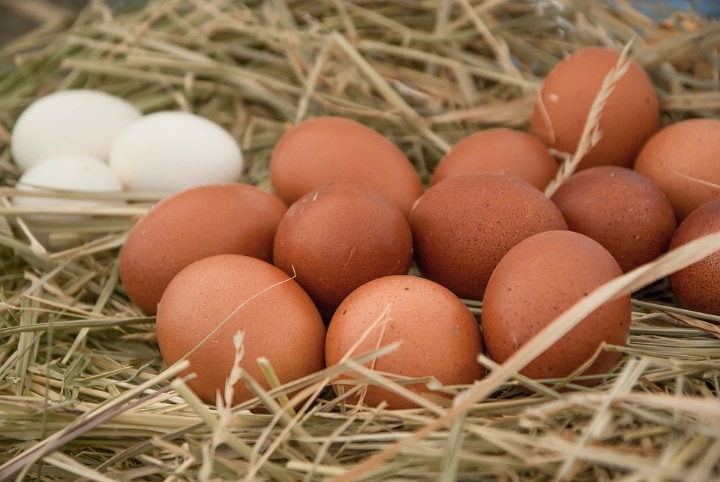
It’s an important aspect to consider if you plan on raising chickens for eggs.
Chickens Love Them
Chicken enjoy eating a mealworm from time to time. No wonder since this is a very nutritious meal and it’s combined really well with the usual food that chickens tend to have.
You Get to Vary Their Diet
Just like people, chickens need a varied diet to stay healthy. We’ve already talked about the best chicken feed.
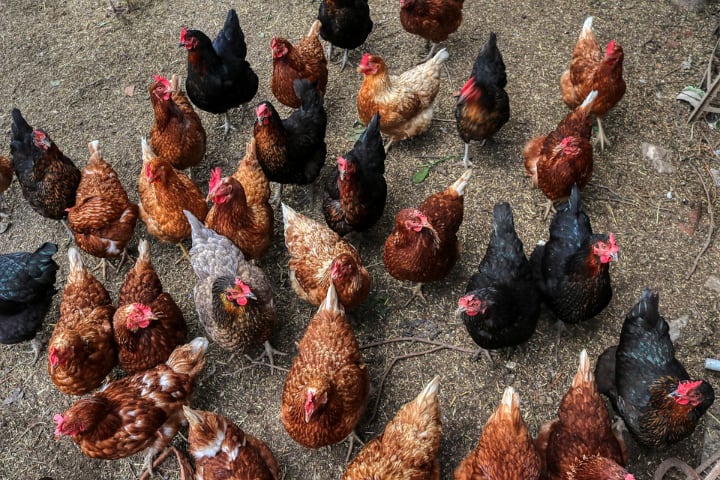
But a mealworm here and there will indeed make a huge difference, and all you have to do is to try it.
Establish a Deep Litter System
If you spread a mealworm serving in with the feed, your chooks will start pecking and scratching until eventually, they will blend with it.
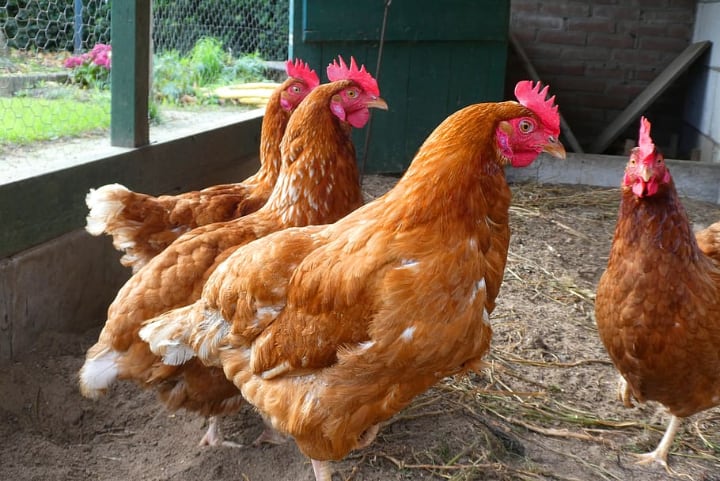
With mealworms on the menu, establishing a deep litter system can become easier.
Mealworms Live Versus Mealworms Dried
Should you feed your chickens live or dried mealworms? Live worms are better because they pack all the nutrients and vitamins that your chickens need.
Dead, dried mealworms still have protein and other nutrients, but they are not as full of vitamins as the living ones. Still, they can be an option depending on where you live.
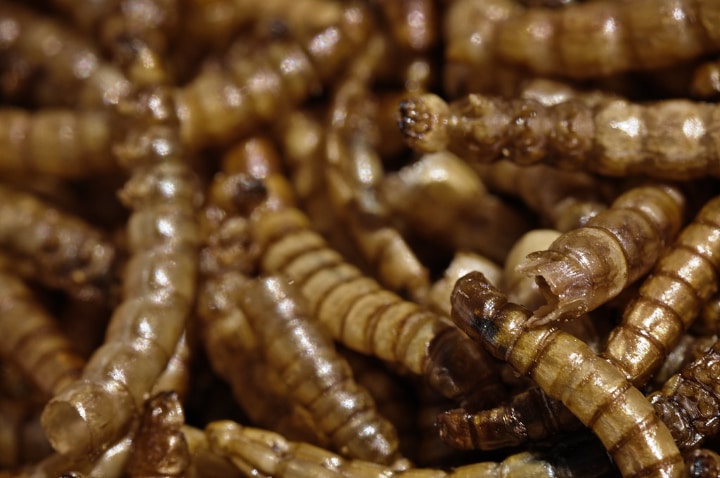
If you can’t afford growing mealworms or there’s no space for it, then you have to rely on the dried ones. These need less care when compared to live worms, and on top of that, you just need to rehydrate with water.
They are great for your chickens either way, so if you don’t have one of the options, you can easily go with the second one.
Mealworms Breeding: How Does It Work?
Breeding mealworms yourself is an excellent idea if you want to avoid buying dried worms all the time. It might sound challenging to breed your own mealworm snacks for your chickens, but it’s not as hard as you imagine.
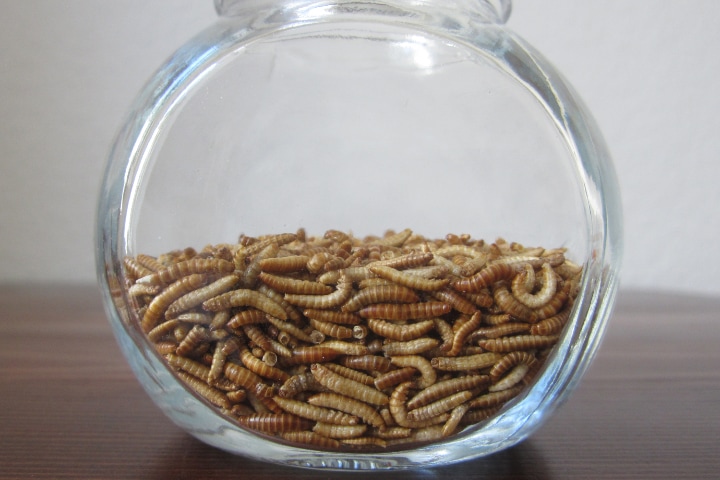
You do need to prepare the best way that you can, but with a bit of experimentation, you can get it done!
Check out now our growing mealworms guide—it’s easy and beginner-friendly!
Step 1 – Buy the Initial Mealworm Stock
You need to order a few beetles or mealworms to get started. The life stages should be on the package based on their development. Buy from a trusted source.
Step 2 – Pick the Ideal Container
Depending on how many of them you need, you might require a large aquarium or another similar container.
Provide enough airflow and a tub with sides so the worms will stay inside. Drill holes in front if you want to boost the airflow.
Step 3 – Select the Substrate
The substrate is a source of food for the worms, so you want it to be as healthy as possible. You have multiple substrate options, such as dog food, wheat flour, bran, oatmeal, cornmeal, and many others. The substrate needs to be around 2-3 inches at most.
Step 4 – Provide a Water Source
You can add fruits or sliced veggies—this will be a good source of water for them. Potatoes, lettuce, carrots, and apples are a proper water source for these worms.
Step 5 – Keep the Humidity and Temperature Under Control
You want a temperature of around 75 degrees Fahrenheit. As we mentioned earlier, a humidity of around 70% is best for breeding mealworms, but you can adjust that based on your own needs.
Important: No artificial light is needed!
Step 6 – Separate Them
Sometimes you have to separate the worms based on their life stages. At one point, you might even need another aquarium or another container to store the worms if they are too many
Check out this video for a summary of the key steps above:
What Do Mealworms Eat?
A mealworm has a variety of food sources. These include animal wastes, stored grains, leaves, dead insects, or products that are decaying. They also like flour, oatmeal, and a variety of other compounds.
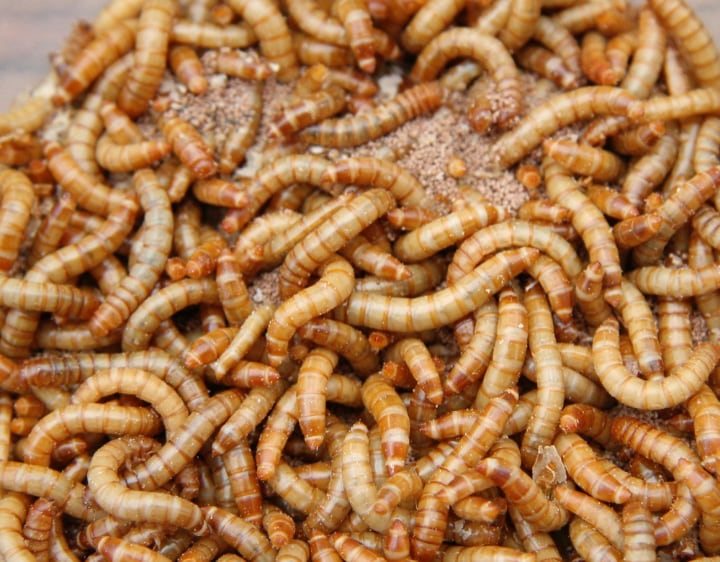
If you want to grow these worms yourself, these food sources will be more than OK. They don’t need any type of water since they will acquire water from their food source most of the time.
The bottom line: These little worms are not picky when it comes to their food. You can feed them waste from the kitchen as well as stuff from your garden.
Mealworms Breeding Kits
Figuring out how to breed these little worms could get a bit messy if you don’t have the right gear. But there are mealworms breeding kits for sale out there that can make your life easier.
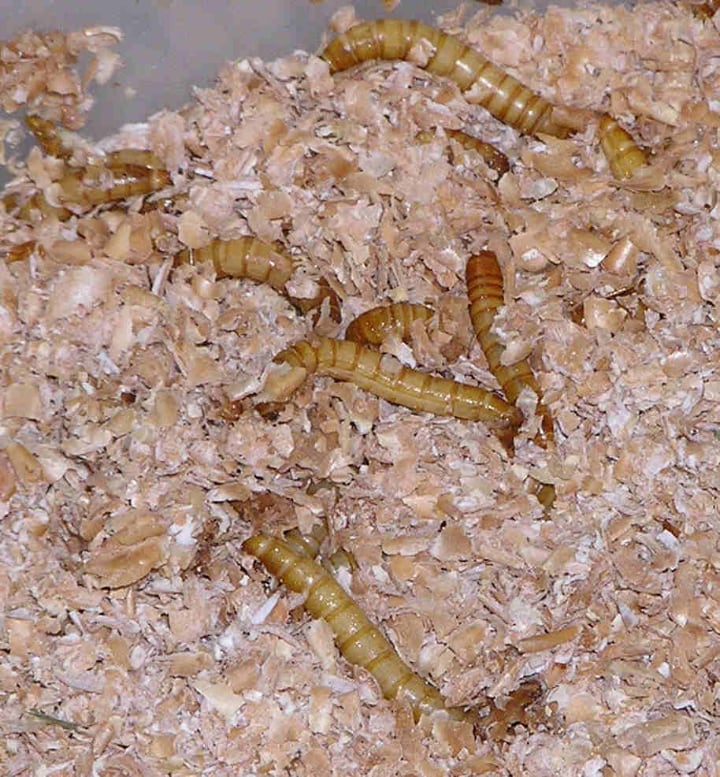
These kits vary in size and content. Some kits will offer you the worms themselves, mealworm food, and storage space for them too. Some of the other kits will include just the worms and food.
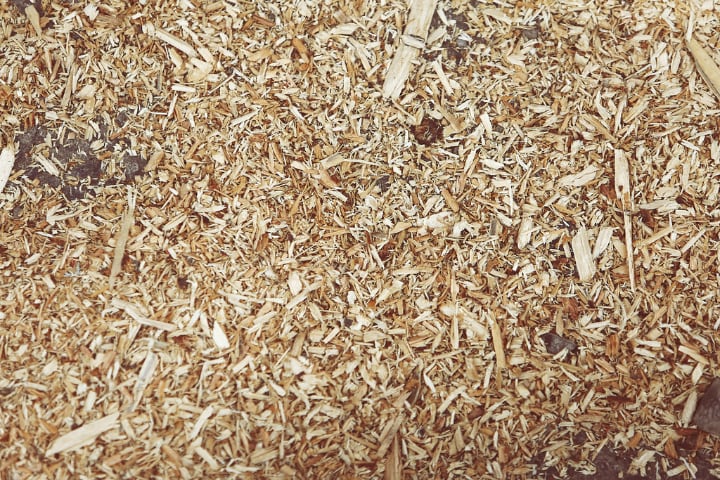
Getting a complete kit is the easiest way to get started with breeding mealworms at home or in your shed or garden. Our advice is to choose a kit that has everything you need.
These are the best breeding kits on Amazon right now:
Mealworms for Sale
If you want to buy mealworms, the first thing you want to do is to figure out how much storage you need for them. You also want to know how many worms you need, so you can get enough space for them.
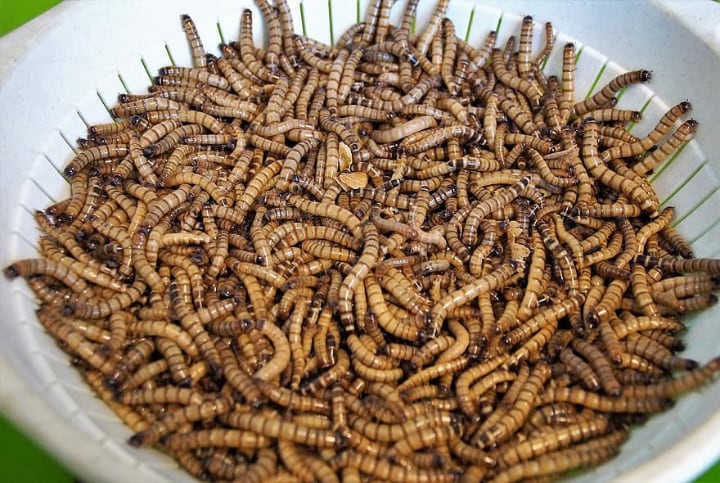
It’s a good idea to buy the right mealworm food when you buy the worms to make sure you have their needs covered and not worry about whether your kitchen waste will be enough.
Important: Buy all worms at the same stage. You don’t want some to be older and others younger, because you will have to split them in separate storage locations.
You can buy live worms on Amazon:
Mealworms Bird Feeder
A good mealworms bird feeder is very helpful for a chicken grower because you don’t have to feed your chickens these worms manually.
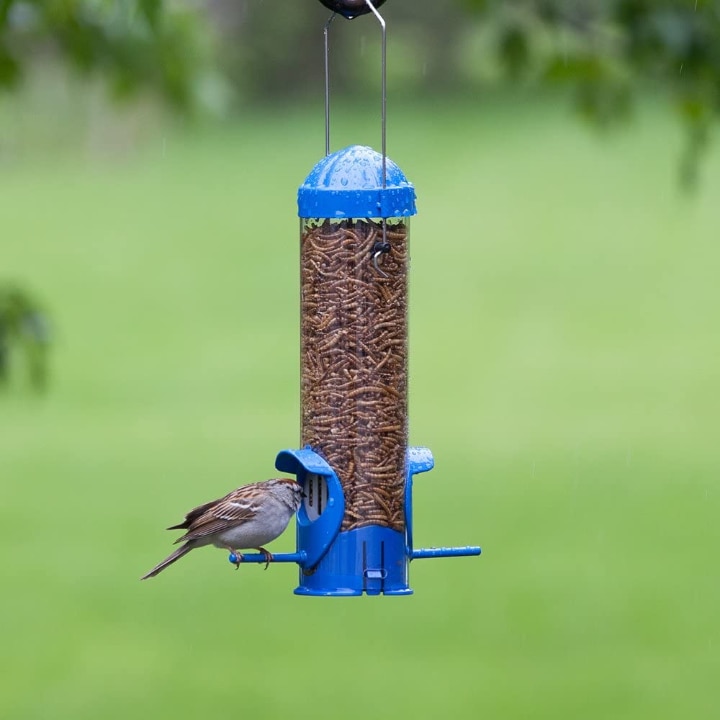
Truth is that’s one of the reasons people choose not to grow mealworms, even when they are aware of their benefits.
Tip: Mealworms bird feeders don’t have to be complicated. Go for something simple that’s easy to use as that’s likely going to be a durable product you won’t have to replace anytime soon.
With most feeders, you just have to add the desired mealworm amount to the feeder, and you are good to go. Your chickens will enjoy eating those mealworms themselves.
Frequently Asked Questions About Mealworms Answered
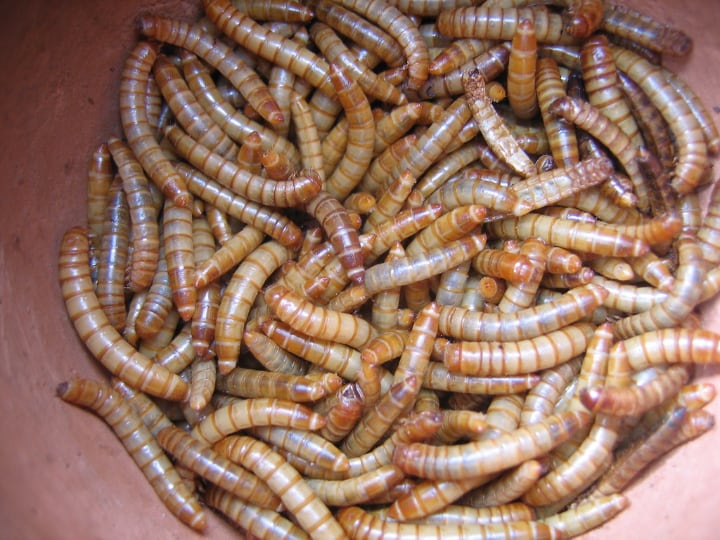
Why do I have mealworms in my house?
If you have a lot of humidity in your home, then that’s the ideal place for mealworms. These worms are attracted to humid locations, and if that location is also away from any light source, you will certainly find a mealworm hive there. The kitchen pantry, forgotten damp items or even the bathroom can be a breeding ground for them. If you find them in your house, you can capture them and grow them for your chickens.
What do you do with mealworms?
You can add mealworms to your chickens’ diet. If you have pet chickens, they need lots of nutrients, and mealworms are a good idea. It’s essential to keep in mind that live ones are better than dried ones for chickens. Some people keep these worms as pets too.
Where are mealworms found?
Despite what you might believe, mealworms will not live in the wild. Instead, they find most human environments a lot friendlier for them. Normally, you will find them in dark places with a lot of moisture, which are great for breeding mealworms.
However, it’s also possible for them to live inside rotten logs, under rocks, or in animal dens. If there’s plenty of moisture and darkness, they will live in those places without a problem. When it comes to locations frequented by humans, these worms will usually enjoy kitchens, warehouses, and humid places like basements.
What animals eat mealworms?
Most people will offer a mealworm to chickens. But they are not the only ones that eat these worms. There are a plethora of animals that like mealworms. Hedgehogs eat them, so do rodents, predatory beetles, lizards, spiders, and many others. Yes, they have a lot of predators!
Got What It Takes to Grow Mealworms?
What it takes is, really, an open mind. And, of course, a bunch of pecking chickens you want to spoil a bit with a nice treat. Because just about all chicken breeds like mealworms!
If you own chickens and want to diversify their meal, then adding these worms to their diet makes a lot of sense.
These worms are very nutritious, they provide a lot of protein, and that will boost the energy of your chickens.
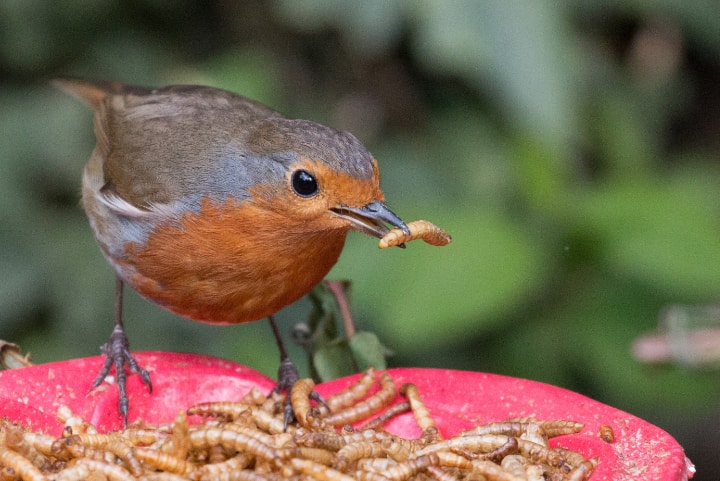
The result? Your chickens will be healthier, their eggs will be full of nutrients too, and they won’t have any feather problems anymore.
On top of that, you can serve your chickens live or dried mealworms. It’s a great meal for your chickens, so don’t hesitate and start growing some worms for your egg-layers!
Will you try breeding mealworms now that you’ve read this guide? Drop us a comment and let us know. We’re curious!

Leave a Reply